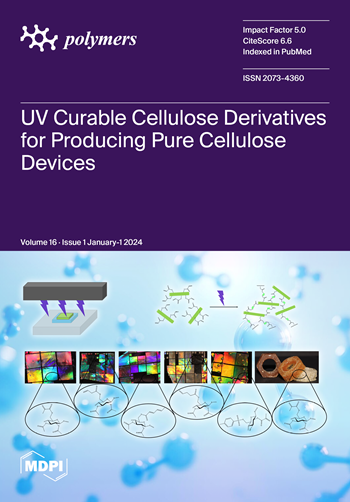Molecular Design and Role of the Dynamic Hydrogen Bonds and Hydrophobic Interactions in Temperature-Switchable Polymers: From Understanding to Applications.
IF 4.7
3区 工程技术
Q1 POLYMER SCIENCE
引用次数: 0
Abstract
Temperature-induced transitions in polymer systems, often governed by a phenomenon called critical solution temperatures (CSTs), lie on the basis of various advanced technologies such as tissues detachment, smart windows, enhanced DNA biosensors, etc. Despite this application-oriented progress, the molecular mechanisms of the temperature-induced transition based on CSTs remain often underexplored or weakly explained. In this review, we focus on the different molecular mechanisms driving CST-based transitions, systematizing information on homofunctional polymer systems. Understanding these mechanisms is crucial for manipulating temperature-sensitive properties, which offers significant potential for future innovations in smart materials.
动态氢键和疏水相互作用在温度可切换聚合物中的分子设计和作用:从理解到应用。
聚合物系统中的温度诱导转变通常由一种称为临界溶液温度(CSTs)的现象所控制,它建立在各种先进技术的基础上,如组织脱离、智能窗口、增强型DNA生物传感器等。尽管取得了这些面向应用的进展,但基于CSTs的温度诱导转变的分子机制仍未得到充分探索或解释薄弱。在这篇综述中,我们着重于不同的分子机制驱动cst为基础的转变,系统的信息同功能聚合物体系。了解这些机制对于操纵温度敏感特性至关重要,这为智能材料的未来创新提供了巨大的潜力。
本文章由计算机程序翻译,如有差异,请以英文原文为准。
求助全文
约1分钟内获得全文
求助全文
来源期刊

Polymers
POLYMER SCIENCE-
CiteScore
8.00
自引率
16.00%
发文量
4697
审稿时长
1.3 months
期刊介绍:
Polymers (ISSN 2073-4360) is an international, open access journal of polymer science. It publishes research papers, short communications and review papers. Our aim is to encourage scientists to publish their experimental and theoretical results in as much detail as possible. Therefore, there is no restriction on the length of the papers. The full experimental details must be provided so that the results can be reproduced. Polymers provides an interdisciplinary forum for publishing papers which advance the fields of (i) polymerization methods, (ii) theory, simulation, and modeling, (iii) understanding of new physical phenomena, (iv) advances in characterization techniques, and (v) harnessing of self-assembly and biological strategies for producing complex multifunctional structures.
 求助内容:
求助内容: 应助结果提醒方式:
应助结果提醒方式:


